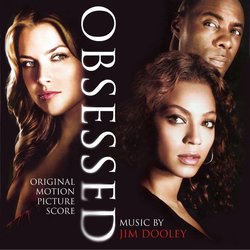

Otherwise, however, the production is a mess. With each new iteration of a Diana narrative, we only seem to wade further into fictitious folklore, distancing ourselves from the truth and complexity of who she was, what made her special, and what we could serve to learn from both her life and death. Instead, we keep resurrecting Diana for our entertainment, spinning new versions of her story and emphasizing its most traumatic parts, all without any self-reflection. “All too many women have suffered some modest, plebeian measure of her heartbreaks,” Gray wrote in the New Yorker.ĭiana’s death could have been epochal in terms of how public figures are portrayed - especially considering how her death occurred.

In 1997, when examining why she and her friends were so deeply affected by Diana’s sudden death, writer Francine du Plessix Gray cited the princess’s relatability: her experience as a lonely but married woman, the still-stinging disappointments and betrayals from men, the way she seemed discarded once her perceived duties were done. She’s not treated as a real person in these varied mediums, but more as an abstract concept: a victim and martyr - an idol we can project onto. The repeated exhumation of her story demonstrates the superficial ways in which both artists and the media seek to define and use her, rather than provide real insight into her life. And Taylor Swift’s recent fashion styling drew quick comparisons to the late princess’s proverbial revenge dress.īut the production of recent works like Diana: The Musical and Spencer prove Diana isn’t merely a tool for cultural reference she is being ossified into a myth. A clip of Corrin as a bashful Diana with evasive eyes has become a meme. Gen Z’ers are using Diana’s canonization as a subversive way to mock boomers on Facebook. Meanwhile, an ongoing, worldwide vigil seemed to take place.ĭiana also happened to die just as the internet was beginning to become widespread - yet another tool contributing to her cult hero status, most recently thanks to social media. The accident - and speculation surrounding it - was covered continuously, and so were aftereffects. Compared to the death of major figures preceding her (e.g., JFK), the fresh existence of a 24-hour news cycle intensified the tragedy’s mileage. Part of the reason Diana’s death was so unforgettable is that it was presented to the public on a then-unprecedented scale. Comparisons between Meghan and Diana have become common thanks to their shared experience being at odds with the monarchy’s rigid, institutional expectations, as well as each woman’s cruel and invasive treatment by the media. This might be partly fueled by The Crown’s popularity as well as persistent headline news involving Meghan Markle and Prince Harry, who left royal life last year. (Watts would later describe the critically panned film as a “sinking ship.”) And now, two more projects - very different in their approach - are populating screens: a filmed version of Diana: The Musical, starring Jeanna de Waal, and Pablo Larraín’s Spencer, starring Kristen Stewart. In 2013, Naomi Watts starred in Diana, a biopic depicting the final two years of the princess's life, including her romance with Hasnat Khan, a heart surgeon. And last year, Emma Corrin delivered a Golden Globe–winning performance as the princess in Netflix’s The Crown while Elizabeth Debicki will take over the potentially controversial role in the upcoming final two seasons.ĭiana has been fictionalized onscreen before.
#Obsessed lyrics series
CNN recently added to the reservoir of Diana documentaries with an original six-part series while director Ed Perkins is working on his own archival theatrical documentary to be released next year. In July, on what would have been her 60th birthday, a memorial statue of the late royal was unveiled at Kensington Palace, surrounded by forget-me-nots - Diana’s favorite flower. It was only after Diana’s death, when then–UK prime minister Tony Blair was giving a grief-stricken speech, that he first dubbed her as “the people’s princess” - a term that resonated and has since endured.Īnd now, it seems like she's everywhere. She had already been a global icon, but her tragic death somehow amplified her eminence.

It’s been nearly 25 years since Diana Spencer, Princess of Wales, died after a disastrous car chase in Paris.


 0 kommentar(er)
0 kommentar(er)
